iOS CI/CD
A step-by-step guide to iOS CI/CD. Learn how to automate iOS builds, manage iOS code signing, continous testing, beta distribution, and publish apps on App Store seamlessly.
What is iOS CI/CD?
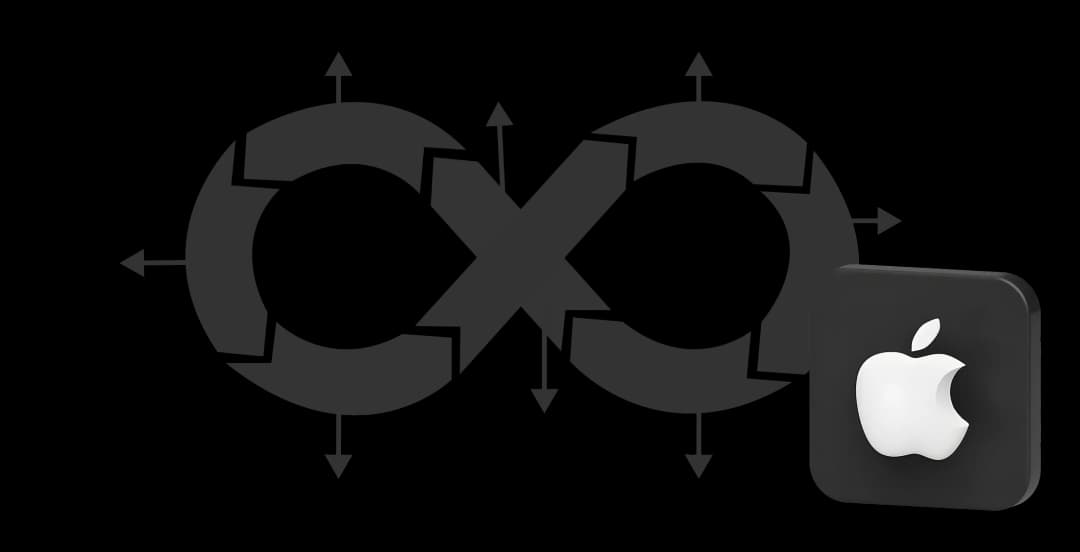
iOS CI/CD (Continuous Integration and Continuous Delivery) is the practice of automating the build, test, and publish processes for iOS applications. In simple terms, it streamlines the entire iOS app build and release cycle, reducing manual effort and minimizing errors.
Just like in frontend and backend development, CI/CD is a crucial part of modern iOS workflows. By setting up a dedicated iOS CI/CD platform, teams can automate repetitive tasks, ensure consistent builds, and deliver high-quality iOS applications faster.
With an effective iOS CI/CD pipeline, teams can:
- Build iOS apps consistently across different environments
- Run automated tests to catch issues early in the development cycle
- Distribute iOS app builds quickly and securely
- Improve collaboration with faster feedback loops
- Ensure your iOS application reaches the market faster and with fewer issues
Whether you're looking to build an iOS app from scratch, build iOS apps for distribution, or optimize how you build apps for iOS across teams, adopting CI/CD helps maintain high quality while accelerating delivery.
What is iOS Build Automation?
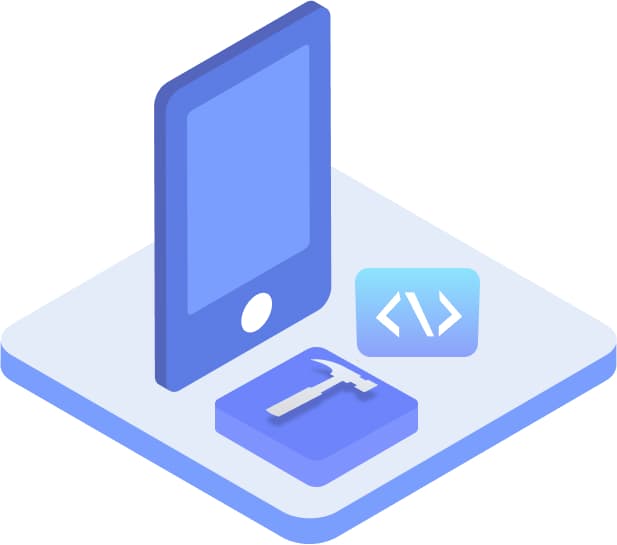
iOS build automation is a core part of Continuous Integration (CI). It automates the process of building an iOS application, which includes compiling code, managing dependencies, and generating build artifacts. As the first step in a complete iOS CI/CD pipeline, build automation ensures that every change is tested and packaged consistently.
A dedicated iOS build server plays a critical role in this process. By running builds in a clean environment, teams can avoid issues caused by differences on local machines and guarantee reliable results.
Key benefits of iOS build automation
Automating the iOS build process offers several key benefits:
- Builds always run in a clean environment, reducing local errors
- Prevents mistakes caused by manual or inconsistent local builds
- Ensures every code change is quickly integrated and tested
- Saves time and effort through automation
- Delivers consistency across all builds
- Improves scalability and reproducibility of your iOS app builds
Common challenges of build automation
While build automation provides many benefits, there are some common challenges teams may face:
- Setting up and maintaining a dedicated iOS build server
- Managing dependencies and environment configurations
- Ensuring fast and reliable builds as the codebase grows
- Integrating with testing and deployment tools
- Handling code signing and provisioning profiles for iOS apps
By understanding these challenges upfront, teams can take proactive steps to address them and ensure a smooth iOS build automation process. CI/CD platforms like Appcircle provide built-in solutions to many of these issues, making it easier to get started with iOS build automation.
Discover how Appcircle's built-in solutions can streamline your iOS build automation →
iOS Version Management in CI/CD
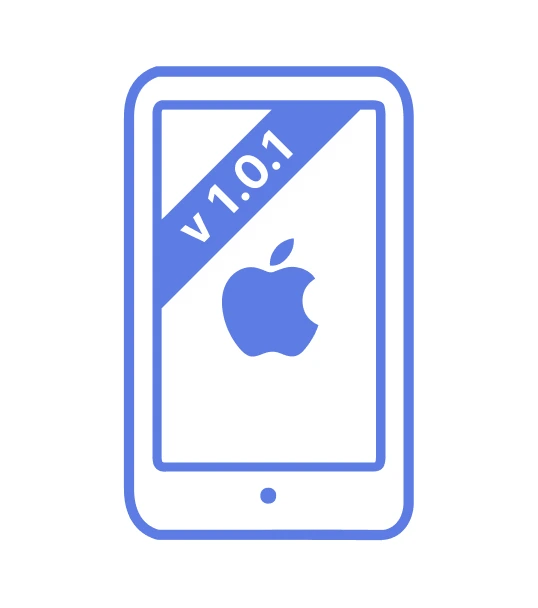
Version management is a critical part of the iOS CI/CD pipeline. Every iOS app build must have a unique build number to be accepted by the App Store or TestFlight. Without proper automation, this process often leads to errors, rejected submissions, and confusion across development environments.
In a CI/CD workflow, teams can automate the way they build iOS applications and assign version and build numbers consistently. This ensures that every change, whether it is a bug fix, new feature, or major release, is properly tracked, tested, and delivered.
Why iOS version management matters in CI/CD:
- Prevents App Store rejections due to duplicate or invalid version numbers
- Keeps development, staging, and production environments synchronized
- Ensures each iOS app build is traceable to a specific commit or release
- Automates versioning so developers can focus on building features instead of tracking numbers
For a deeper look at best practices, including semantic versioning and build number automation, see this iOS App Versioning guide.
By combining iOS build automation with version management, teams can achieve a seamless release flow. This makes it faster and easier to build iOS apps for distribution without running into version conflicts.
Managing iOS CI/CD Environments
Managing multiple environments is a common challenge in iOS development. Teams often work with development, staging, and production builds, each requiring different API endpoints, signing identities, and configurations. If not handled properly, this can create deployment errors and inconsistencies.
On modern iOS CI/CD platforms, environment management is handled at the pipeline level rather than directly in Xcode. By configuring your iOS build environment within the CI/CD service, you can ensure clean separation of settings and make your workflows more scalable.
Best practices for managing environments in CI/CD:
- Define environment variables environment variables in the iOS build service instead of hardcoding them in the app
- Maintain separate configurations for each environment, ensuring that a staging build does not end up in production
- Use offsets in build numbers to keep versioning synchronized across dev, staging, and production
- Run automated tests per environment to confirm reliability before release
By handling environments inside your cloud iOS build pipeline, you gain better scalability and reproducibility.
iOS Code Signing Automation
It is a requirement of Apple that all executable code be signed using Apple-issued certificates. Code signing in iOS is slightly complicated because there are multiple signing credentials that need to be handled and maintained, including Apple Certificates, provisioning profiles, and device management, which are required for development and ad-hoc distribution on real devices.
There are two options to handle code signing: manual and automatic. For manual signing, the user is responsible for creating a provisioning profile that is compatible with their app and matching it with the appropriate certificate, along with adding device information where the app will be used, if applicable. Automatic signing handles the creation of provisioning profiles that match your application.
Key components of iOS code signing:
- Apple Certificate: A signing certificate issued by Apple. Main types include Apple Development and Apple Distribution, but there are many others that can be used depending on your application's needs.
- Bundle ID: An app's unique identifier. You need a Bundle ID to assign capabilities or create a provisioning profile.
- Provisioning Profile: The profile that allows installing apps on your iOS devices or Mac. A provisioning profile includes a signing certificate, device identifiers, and a Bundle ID.
- Apple Devices: You need to register your devices via the Apple Developer Portal to create a development or ad-hoc provisioning profile. For registration, you need the device name and a device ID, which is the UDID that uniquely identifies an Apple device, including a Mac.
For more details on iOS code signing and learning which provisioning profile should be matched with which certificate depending on the use case, visit this page.
Automating the code signing process is a huge must for your mobile CI/CD pipeline. When building your app, depending on the environment—development, staging, testing, or release—your pipeline should be configured to sign your application. If there are other use cases such as distributing an app to testers after development, re-signing can be used to remove the original signing and sign the app with a new provisioning profile and certificates.
How to Build iOS Apps with CI/CD
To build an iOS app, a macOS build runner is a requirement. This is one of the top reasons why a CI/CD platform can be used to avoid dealing with macOS management. A good CI/CD platform should automatically handle macOS build runners with Xcode installed on them, including multiple versions of Xcode, to make different versions available for apps that require them.
After setting up a macOS runner with Xcode installed, an iOS CI/CD pipeline should include a step that installs certificates and provisioning profiles to use when signing the application. Another important step is dependency installation, such as the CocoaPods install step, which installs the required dependencies to build the app.
One critical step that actually handles the build process is the xcodebuild step. This is the main command used in Xcode to build an iOS application. Additionally, having a step that automatically exports the artifacts, such as the `.ipa` file, is very useful.
There are many other steps that can be integrated into your iOS CI/CD pipeline, such as running unit tests or integrating with third-party testing tools, but these depend on a team's workflow management.
Cross-Platform iOS CI/CD Builds
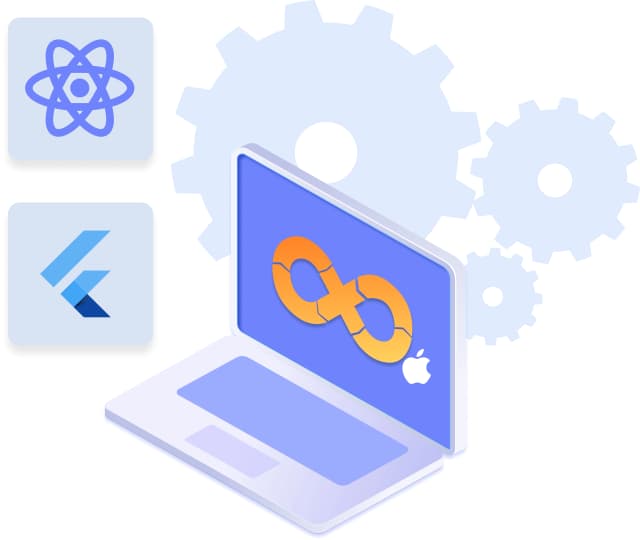
A good CI/CD platform should not only support native iOS builds but also support cross-platform builds such as React Native or Flutter. Cross-platform iOS applications may require different, though similar, steps for building. It is important to note that a macOS device is still required for building cross-platform iOS apps.
For example, for Flutter apps, a Flutter install and Flutter build step are required before actually building your application with xcodebuild. Similar to native iOS apps, the CI pipeline can be customized and extended based on specific needs.
Best practices for cross-platform iOS CI/CD:
- Maintain Clear Platform Boundaries: Organize your project to separate platform-specific logic from shared modules. This structure simplifies maintenance, prevents dependency issues, and makes troubleshooting easier when builds fail on one platform.
- Choose the Right Stack: Start by selecting tools that fit your development and delivery goals, including frameworks such as Flutter, React Native, or Xamarin.
- Standardize Build Environments: Use standardized environments across all stages of your pipeline. Whether through managed CI/CD runners or containers, consistency in dependencies and tooling ensures that builds behave the same way locally and in CI.
- Automate Configuration Management: Manage configurations through environment variables to improve flexibility and security.
- Optimize Build Efficiency: Enable caching and incremental builds to reduce build duration. Reuse dependencies between builds, and rebuild only the components that have changed since the last commit.
iOS Continuous Testing Strategies
Continuous Testing ensures the quality of an application at every stage of development. It helps detect issues early, reduces feedback time, and improves product quality throughout the development cycle.
Today, businesses demand faster development and release cycles. This means an application is no longer developed and then handed over to testers. With continuous testing, an application is developed, tested, and distributed continuously.
For example, when a pull request (PR) is opened, a CI/CD pipeline is triggered, automated tests are executed, and the results are sent to a third-party testing scanner. If an issue is detected and the new development does not meet QA standards, the developer is instantly notified.
DevOps tools and a well-designed CI/CD pipeline ensure that testing is performed across all stages, from development to release.
iOS App Distribution: TestFlight & Beta & Enterprise
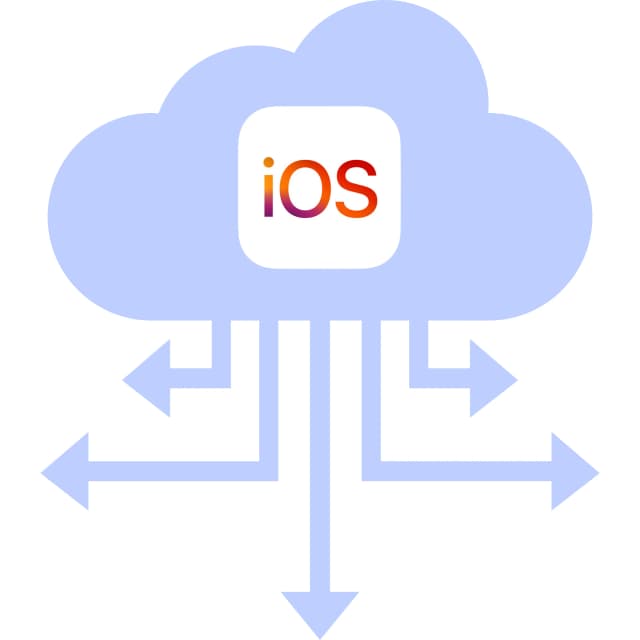
There are multiple ways to distribute your iOS apps. Distribution means sharing the application with testers or users after the development process is complete. Below are the main distribution methods:
1. TestFlight Distribution
- TestFlight is Apple's official beta testing platform.
- It allows developers to distribute iOS apps and App Clips to testers before the official App Store release.
- Testers can install the app on their devices and provide feedback directly to developers.
- This helps identify and fix issues before the public launch.
2. Ad Hoc Distribution
- You can distribute app artifacts directly to testers using ad hoc provisioning profiles.
- The app must be signed with a provisioning profile that includes the UDIDs of the target devices.
- This method allows testing the application on real devices without publishing it to the App Store.
3. In-House (Enterprise) Distribution
- Apple provides this option exclusively for members of the Apple Developer Enterprise Program.
- It is used for distributing internal apps within an organization, such as HR or productivity tools.
- Apps are signed with a specific Enterprise provisioning profile, which allows installation on devices without registering each device's UDID.
- This method is ideal for securely sharing apps with internal users.
iOS App Store Release Automation
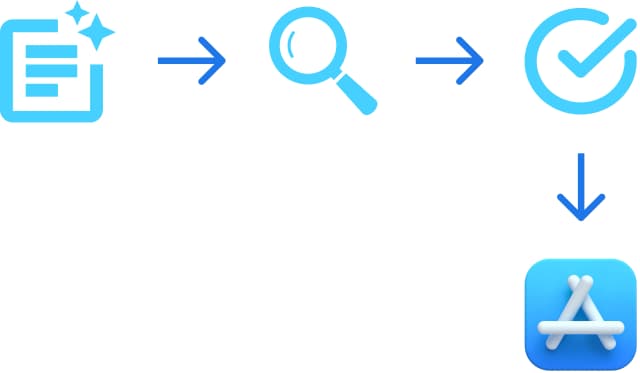
Before an app is released on the App Store, it must be submitted to App Store Connect for review. However, this process can be tedious, as even a single mistake can lead to app rejection.
Additionally, internal approvals are often required before any release. To manage this entire process efficiently, a CI/CD pipeline should be configured to automate App Store release management, with customization options that align with your organization's approval workflows and business processes.
A key part of this automation is leveraging the App Store Connect API, which allows developers to integrate submission, version management, build uploads, and release tracking directly into their CI/CD pipelines. This eliminates manual steps, minimizes human error, and speeds up the overall release cycle. To learn more about how to use the App Store Connect API to streamline your mobile DevOps process, check out this detailed guide .
Top iOS CI/CD Tools Compared
There are many iOS CI/CD platforms available. It is critical to evaluate these platforms based on your team and application needs. Several key criteria should be considered when selecting a mobile CI/CD platform, such as supported platforms, build stack compatibility, build times, workflow customization, ready-to-use integrations, built-in tester distribution, store publishing automation, and more.
Appcircle is one of the platforms designed with all the needs of an iOS CI/CD pipeline in mind. For a detailed comparison of the top iOS CI/CD platforms, visit this page.
FAQs
What is CI/CD in iOS?
Which CI/CD tool is approved by Apple?
How do I run an iOS build in Xcode?
How do I build an iOS app using Flutter?
Can I build or run iOS apps on a non-Apple device?
How can I build an iOS app without a Mac?
Get Started with Appcircle
Save time, reduce costs, and increase developer productivity now.
Get informed about news, new releases, and mobile DevOps.